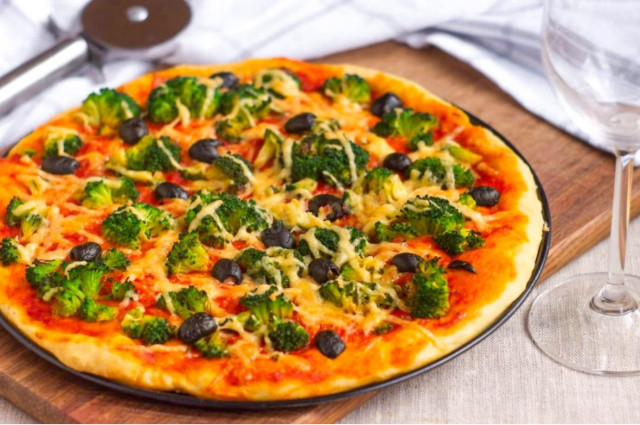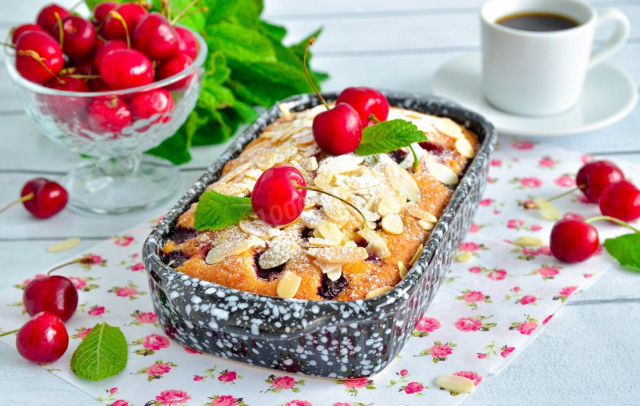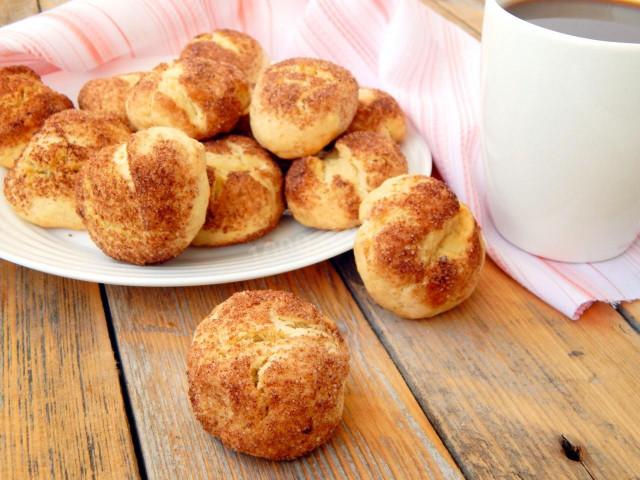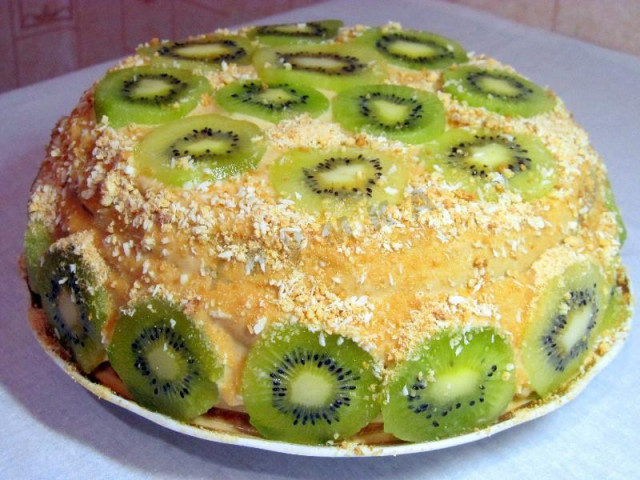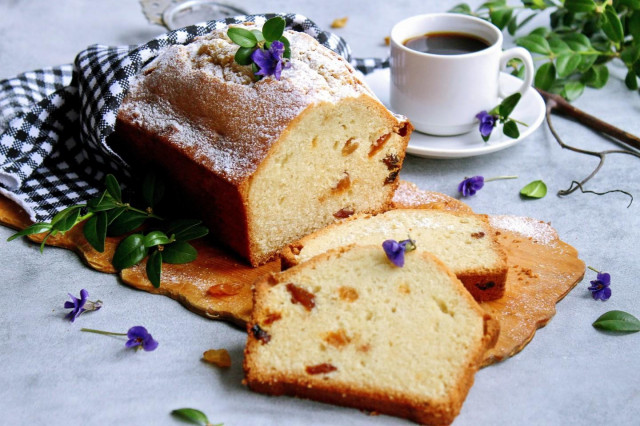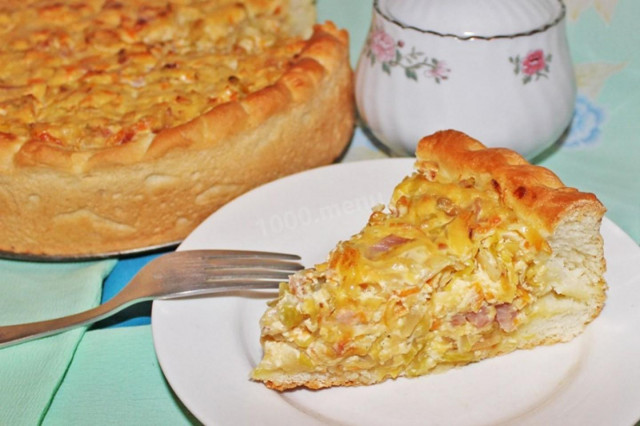Composition / ingredients
Step-by-step cooking
Step 1:
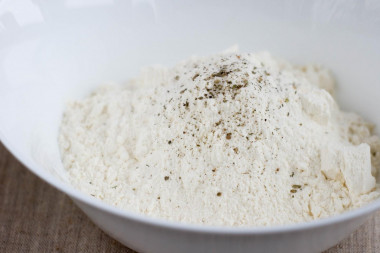
How to make vegetarian pizza? Start cooking with the dough. How to make dough? Sift the flour into a large bowl, add fine salt, sugar, and a pinch of herbs. It is important to sift the flour to saturate it with oxygen. Then the baking will turn out to be airy and will rise well when baking.
Step 2:
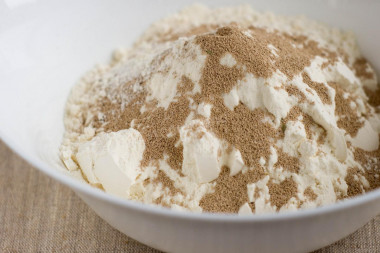
Add dry yeast (the smaller the granules are, the better).
Step 3:
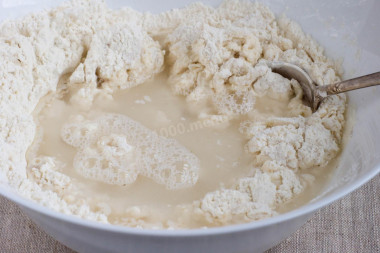
Mix the dry foods and then pour in warm water. It is important that the water is warm, not hot, which will kill living organisms yeast. Stir gently.
Step 4:
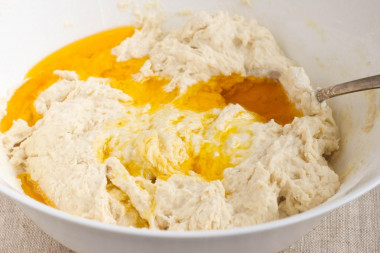
Pour in the vegetable oil. It is preferable to use olive oil, but ordinary vegetable oil is also suitable. Knead the dough with your hands. It should become homogeneous and smooth, not sticky, but at the same time remain soft. Put the dough in a warm place for 40 minutes to rise, covering the bowl with a towel.
Step 5:
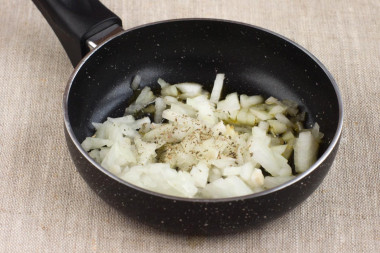
Meanwhile, prepare the sauce. How to make sauce? Heat vegetable oil for frying in a frying pan, fry finely chopped onion on it until translucent.
Step 6:
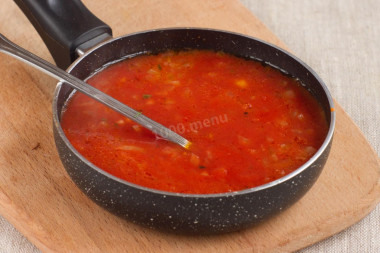
Add tomato paste, salt, water, and herbs to the onion. Stir, bring the sauce to a boil and boil for 3-4 minutes. Set aside.
Step 7:
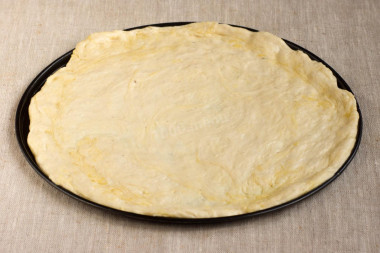
The dough should double during proofing. Knead it a little, lightly sprinkling it with flour. Then spread as thin a layer as possible on a form greased with vegetable oil or on a baking sheet.
Step 8:
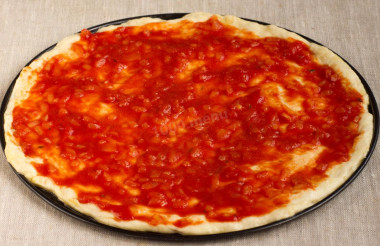
Spread the sauce evenly on top.
Step 9:
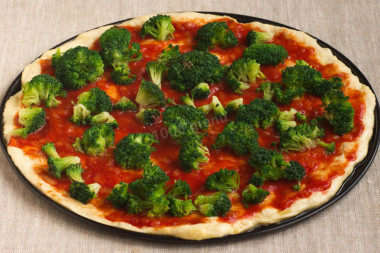
Lay out the tops of broccoli inflorescences boiled in boiling salted water for 3 minutes.
Step 10:
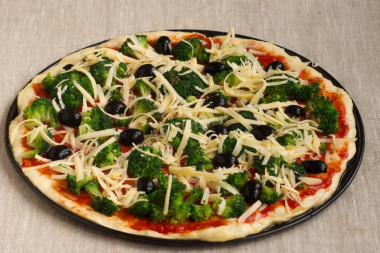
Spread the halves of olives on top and sprinkle with grated cheese. You can sprinkle a little more with herbs (it is highly desirable to use at least oregano). Place in a preheated 250 degree oven and bake for about 10-15 minutes. Serve hot pizza immediately to the table. Enjoy your meal!
Do not limit yourself to broccoli and olives, you can use slices of tomatoes without skin, pickles, circles of sweet bell pepper.
Important! Using dry yeast, it should be borne in mind that they occur in two forms: active and instant (read the instructions carefully before use!).
Active dry yeast looks like beads or small balls. Before applying them, they must be brought out of the "sleep mode". To do this, the active yeast is diluted in warm sweet water, milk or whey. The resulting bubbles, foam or "cap" indicate that the yeast is ready for further use. Active dry yeast must be brought to complete dissolution in the liquid, otherwise, due to the remaining grains, the dough may not rise and the baking will be spoiled (yeast grains that have not dissolved in the liquid and got into the dough will not disperse on their own, which means they will not work).
Instant dry yeast is easier to use. They do not need to be activated before use. Such yeast, along with other ingredients, is simply added to the dough. As a result, the baking time is reduced.
It should also be remembered that both types of dry yeast may differ in their activity from different manufacturers.
Be prepared for the fact that flour may need more or less than indicated in the recipe. Focus not on the amount of flour, but on the desired consistency of the dough. To avoid mistakes, read about flour and its properties!
Keep in mind that everyone's ovens are different. The temperature and cooking time may differ from those specified in the recipe. To make any baked dish successful, use useful information about the features of ovens !
Caloric content of the products possible in the composition of the dish
- Dutch cheese - 352 kcal/100g
- Swiss cheese - 335 kcal/100g
- Russian cheese - 366 kcal/100g
- Kostroma cheese - 345 kcal/100g
- Yaroslavsky cheese - 361 kcal/100g
- Altai cheese 50% fat content - 356 kcal/100g
- Soviet cheese - 400 kcal/100g
- Cheese "steppe" - 362 kcal/100g
- Uglichsky cheese - 347 kcal/100g
- Poshekhonsky cheese - 350 kcal/100g
- Lambert cheese - 377 kcal/100g
- Appnzeller cheese with 50% fat content - 400 kcal/100g
- Chester cheese with 50% fat content - 363 kcal/100g
- Edamer cheese with 40% fat content - 340 kcal/100g
- Cheese with mushrooms of 50% fat content - 395 kcal/100g
- Emmental cheese with 45% fat content - 420 kcal/100g
- Gouda cheese with 45% fat content - 356 kcal/100g
- Aiadeus cheese - 364 kcal/100g
- Dom blanc cheese (semi-hard) - 360 kcal/100g
- Lo spalmino cheese - 61 kcal/100g
- Cheese "etorki" (sheep, hard) - 401 kcal/100g
- White cheese - 100 kcal/100g
- Fat yellow cheese - 260 kcal/100g
- Altai cheese - 355 kcal/100g
- Kaunas cheese - 355 kcal/100g
- Latvian cheese - 316 kcal/100g
- Limburger cheese - 327 kcal/100g
- Lithuanian cheese - 250 kcal/100g
- Lake cheese - 350 kcal/100g
- Gruyere cheese - 396 kcal/100g
- Broccoli - 33 kcal/100g
- Whole durum wheat flour fortified - 333 kcal/100g
- Whole durum wheat flour universal - 364 kcal/100g
- Flour krupchatka - 348 kcal/100g
- Flour - 325 kcal/100g
- Granulated sugar - 398 kcal/100g
- Sugar - 398 kcal/100g
- Olives - 166 kcal/100g
- Vegetable oil - 873 kcal/100g
- Tomato paste - 28 kcal/100g
- Salt - 0 kcal/100g
- Water - 0 kcal/100g
- Onion - 41 kcal/100g
- Spices dry - 240 kcal/100g
- Dry yeast - 410 kcal/100g

